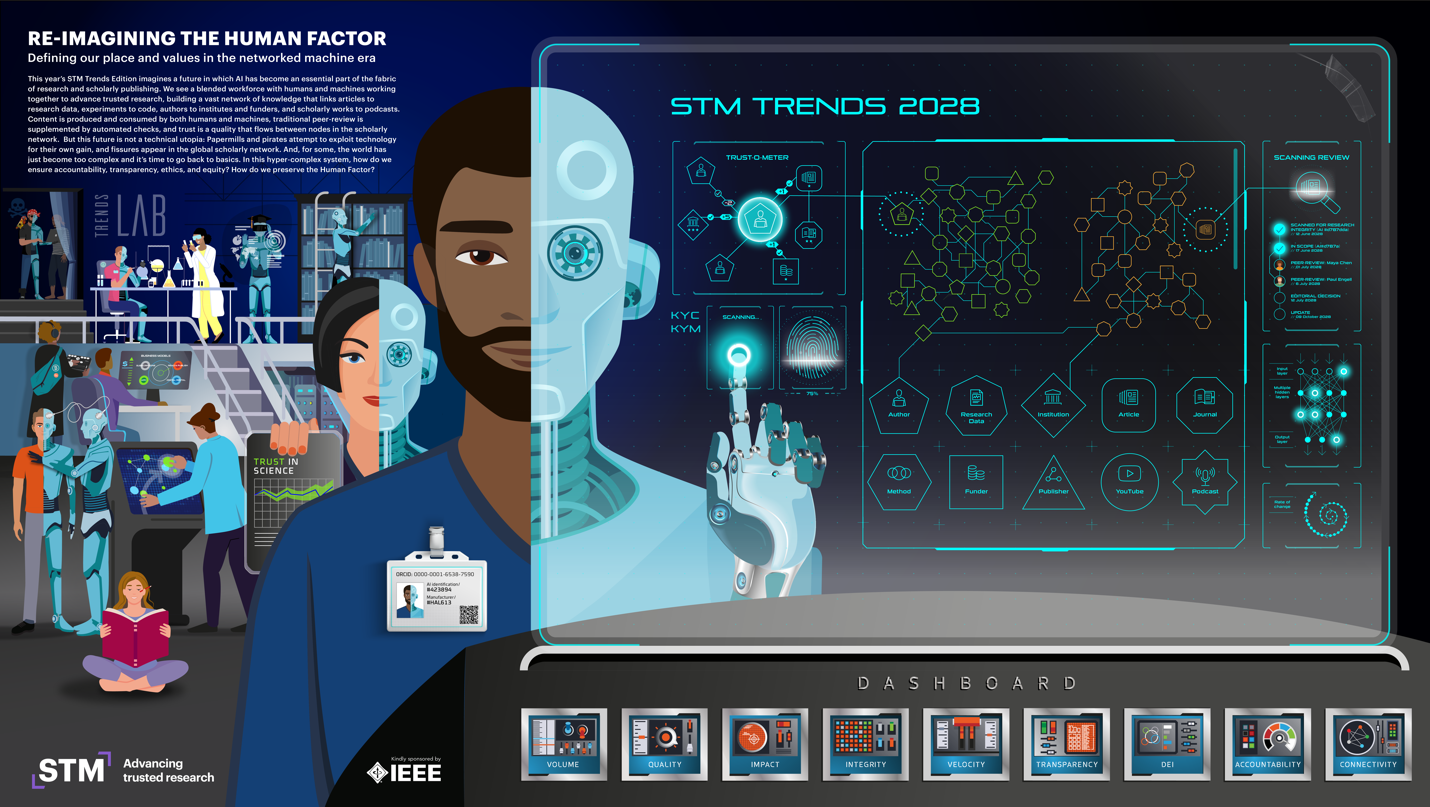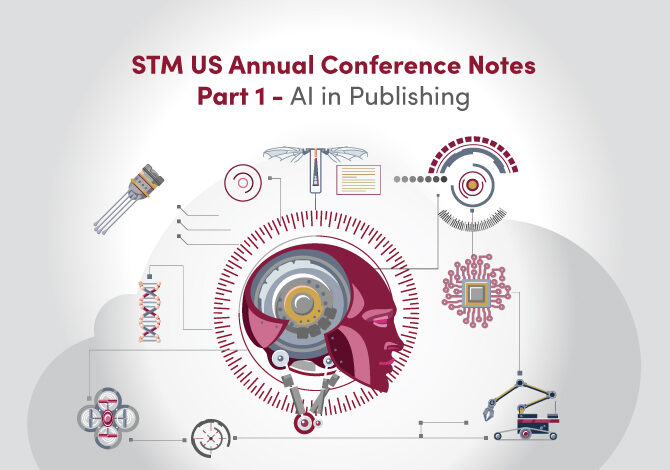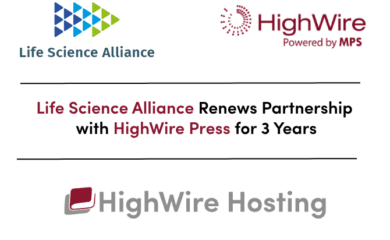April 24 and 25, 2024
Tony Alves, SVP of Product Management, attended the STM US Annual Conference in Washington, DC, April 24 and 25, 2024. The meeting centered on the transformative impact of artificial intelligence and digital technologies on the landscape of scholarly publishing and communication. Key themes included the integration of AI as a core component of scholarly practices, enhancing collaboration between humans and machines, and addressing the infrastructural needs of the digital transformation in publishing. Discussions explored the ethical, transparency, and trust challenges posed by AI, emphasizing the need for maintaining integrity within the scholarly community amidst technological advancements. The conference also highlighted the evolving roles within research offices, libraries, and editorial practices, reflecting on how AI could optimize workflows, enhance data management, and potentially reshape future research dissemination. The sessions collectively underscored a proactive approach towards embracing technological innovations while safeguarding the core values and reliability of scholarly outputs.
Tony’s report is in three parts. In this first installment he examines the presentation of the STM Trends 2028 infographic entitled, Re-imagining the Human Factor – Defining our place and values in the networked machine era. Also included is a review of the Ithaka S+R report called, “The second digital transformation of scholarly publishing”, which was jointly funded by STM and Ithaka S+R.
Launch of STM Trends 2028
Re-imagining the Human Factor – Defining our place and values in the networked machine era
Hylke Koers, Chief Information Officer, STM Solutions
Focus: Discussing the role of AI as a central element in the future of scholarly publishing, exploring its potential to redefine the interaction between human and machine efforts in the research environment. What will our industry look like in five years? What are the key drivers for change?
Key Points:
- Vision of integrating AI deeply into the scholarly publishing process, facilitating a collaborative dynamic between humans and machines.
- Examination of potential risks, including technological exploitation and increased complexity, which could compromise transparency and ethical standards.
- Discussion on the need to maintain integrity and trust within the scholarly community despite the challenges posed by AI integration.
The re-imagined future of research and scholarly publishing heavily integrates Artificial Intelligence (AI), visualizing a scenario where AI is not just an operational tool but a central aspect of the scholarly fabric. This year’s STM Trends Edition predicts a future where a blended workforce of humans and machines collaborates to advance trusted research. Such integration would enhance connectivity linking various elements of scholarly work—from articles and data to authors and funders. However, this technological integration also invites challenges, such as exploitation by papermills and pirates, and increases the complexity of the scholarly environment, raising questions about maintaining transparency, accountability, ethics, and equity.
In this envisioned future, interactions between humans and machines transcend traditional boundaries, introducing new processes and skill sets for publishers, researchers, and funders. The integration involves various forms of communication, including virtual reality and machine-to-machine interfaces, with significant mediation by AI. This shift necessitates novel identification systems like PIDs for AI agents and possibly ORCID-like identifiers for AI contributors, ensuring that AI’s role in the scholarly publishing ecosystem is both traceable and accountable. Additionally, this system will rely heavily on AI to assist in decision-making processes, augment peer reviews, and foster new workflows, which are crucial for maintaining the quality and integrity of scholarly outputs.
Despite the technological advances, maintaining cohesion and trust within the scholarly community remains paramount. Challenges like misinformation, disinformation, and geopolitical tensions threaten to undermine public trust and could potentially lead to fragmentation within the scholarly community, described as the “splinternet.” To counter these issues, the community must uphold shared norms and values like quality, trust, transparency, and accountability. As we integrate more AI into scholarly communications, the overarching goal is to ensure that these technological advancements enhance rather than compromise the integrity and velocity of research, always with a keen eye on preserving the essential human factor in the equation.

The second digital transformation of scholarly publishing
Roger C. Schonfeld, Vice President, Organizational Strategy, Ithaka S+R
Tracy Bergstrom, Program Manager for collections and infrastructure in the Libraries, Scholarly Communication, and Museums program, Ithaka S+R
Focus: Analyzing the ongoing transformation in scholarly publishing driven by digital technologies and AI, with a focus on infrastructure needs and strategic adaptations.
Key Points:
- Overview of the competitive impact of shared digital infrastructure on the efficiency and outreach of scholarly publishing.
- Discussion on the necessity for new infrastructure to accommodate the evolving demands of digital transformation.
- Strategies for long-term sustainability, including the integration of Persistent Identifiers to ensure the reliability of digital scholarly outputs.
The report “Shared Infrastructure for Scholarly Publishing” by Roger C. Schonfeld and Tracy Bergstrom, provided by Ithaka S+R, examines the strategic dynamics and the evolving role of AI within the scholarly publishing sector. Based on research conducted in 2023, which included 50 interviews and additional insights from several commentators and advisors, the report highlights the ongoing second digital transformation in scholarly communication. This transformation is defined by its innovative demands and the significant impact of shared infrastructure competitiveness on the research publishing sector’s overall competitiveness.
The study identifies critical needs for new shared infrastructure to support the changing landscape of scholarly communication. These include addressing the atomization of scholarly articles, ensuring the trustworthiness of the scholarly record, and drawing deeper meanings from research outputs. Moreover, it emphasizes the need to adapt to new business models and develop alternative systems for scholarly communication. Examples of immediate actions include small and midsize organizations advocating for shared services, investments in automated tools to detect fraud, and enhancing public understanding of science to build trust.
The report also explores long-term strategies for maintaining trust within the scholarly community, such as addressing the fragmentation of identifier providers and maximizing the impact of Persistent Identifiers (PIDs). It discusses designing new models for the scholarly record and redefining what materials count as scholarship. Looking ahead, it aligns with the themes discussed in STM Trends, focusing on the integration of a blended workforce of humans and machines, fostering globally connected knowledge systems, and maintaining accountability, transparency, ethics, and equity in an AI-integrated infrastructure.
The upcoming generative AI addendum by Ithaka S+R aims to further examine the necessary systems and structures to balance the diverse needs of authors, readers, rights holders, publishers, and aggregators. This initiative underscores a proactive approach towards embracing technological advancements while safeguarding the integrity and trustworthiness of scholarly communications.
-By Tony Alves




